

Super Hang-On Review (Sega Genesis/Mega Drive)
source link: https://hackernoon.com/super-hang-on-review-sega-genesismega-drive
Go to the source link to view the article. You can view the picture content, updated content and better typesetting reading experience. If the link is broken, please click the button below to view the snapshot at that time.
Super Hang-On Review (Sega Genesis/Mega Drive)
Listen to this story
Retrogamer and Champion of the Obscure and Defenceless
Sega were on a hot streak back in the 1980s with classic arcade games such as Outrun, Thunder Blade, Golden Axe and the original Hang-On, which was ported to the Sega Master System (Mark 3 in Japan) and built into the first editions of the console. In 1987, its surprisingly improved (and more fondly remembered) sequel, Super Hang-On, hit the arcades and was an immediate success - gone was the linear A-to-B gameplay of its predecessor, now the player could choose which course they could race on and even receive multiple endings depending on their performance and the course chosen. It was ported to all the home computers of the era including the released-only-in-Japan Sharp X68000, the Japanese answer to the Commodore Amiga.
This review focuses on what is arguably the most iconic and familiar version of the game, ported across to the Sega Genesis (or Mega Drive in Europe), Sega’s successor to the Master System/Mark 3. I have fond memories of playing this in my youth, always trying to beat my best time and score while looking for techniques to improve my performance.
For the purpose of this review, I will cover and play the game with an actual 6-button Genesis/Mega Drive controller for the sake of authenticity.
The Game
As with all games made for home consoles, the first thing you see is the company’s logo, in this case, Sega. The player is then introduced to a main menu as seen below.
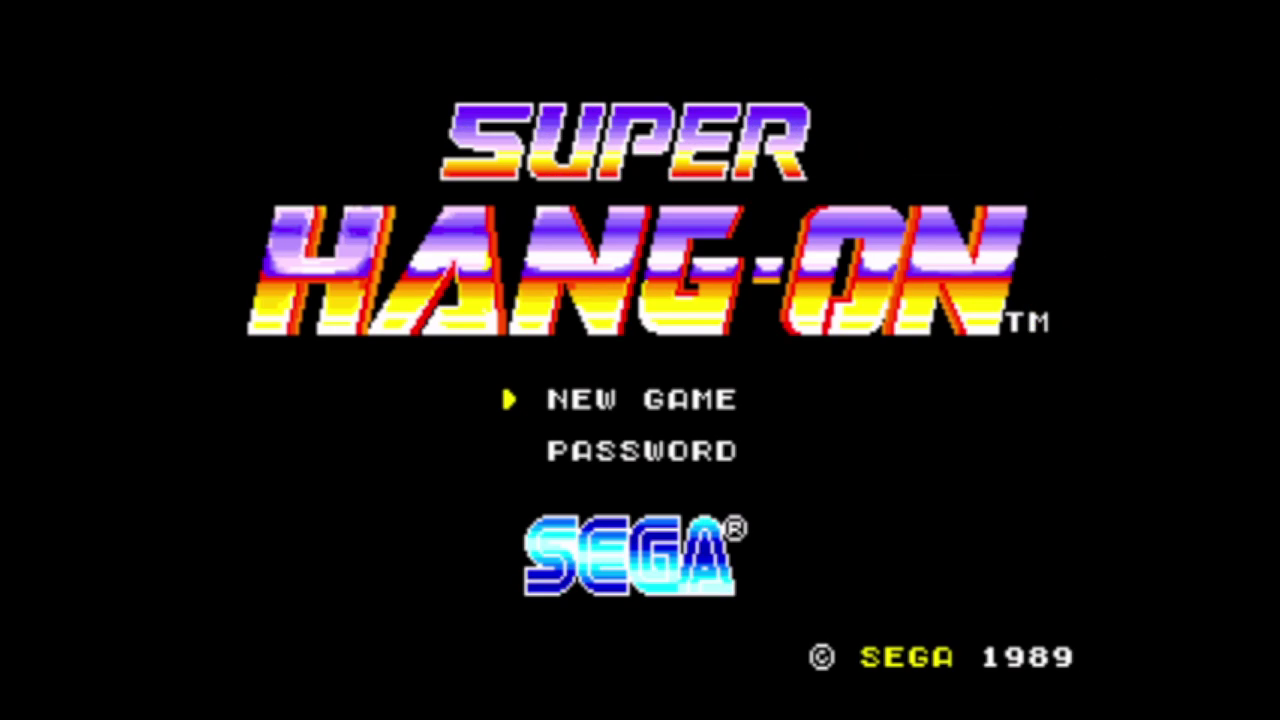
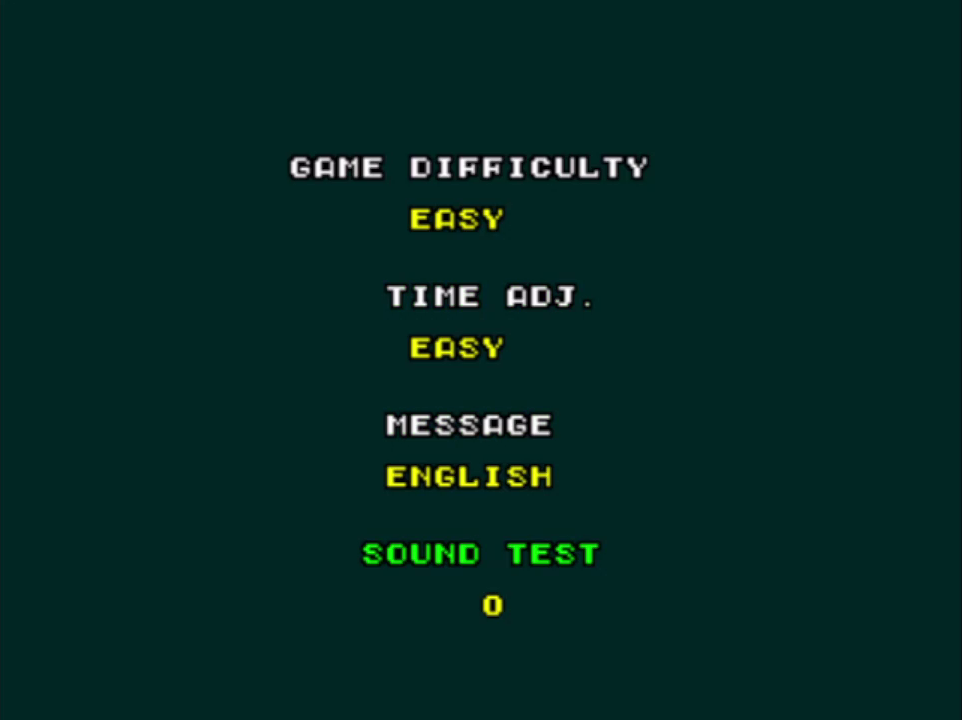

Arcade Mode replicates the arcade experience with fast and easy gameplay.
Original Mode is a championship mode unique to this version of the game.
Arcade Mode
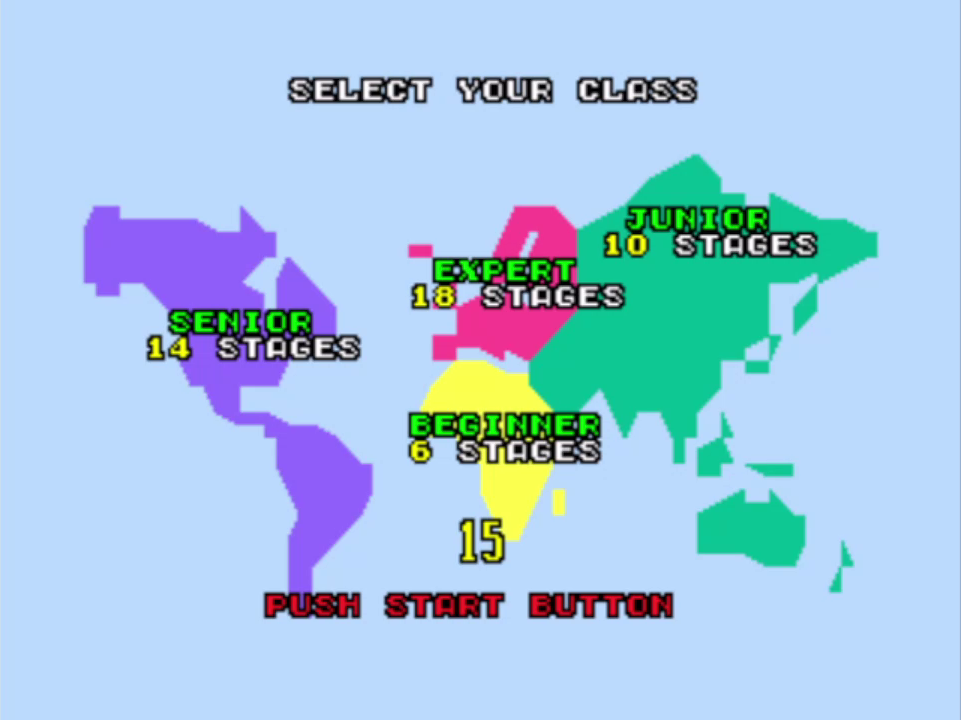
Africa is the easiest course, and is the subject of this review (6 stages).
Asia is an all-rounder, balancing gameplay with a fair difficulty (10 stages).
America is for tough bikers only, as you will need speed and reflexes to survive (14 stages).
Europe is the ultimate challenge - for experienced riders only (18 stages).
Once the player has chosen their course, they can then choose their desired background music or BGM for their thrill ride. Some versions of the game (Commodore 64, Commodore Amiga and Atari ST) allow the player to ride without music and instead have sound effects only, while others (ZX Spectrum and Amstrad CPC) do not have music due to memory restrictions. Given that the music is an integral part of the Super Hang-On experience, this makes the Genesis/Mega Drive port one of the best conversions from the presence of this option alone. My personal favourite composition is Winning Run.
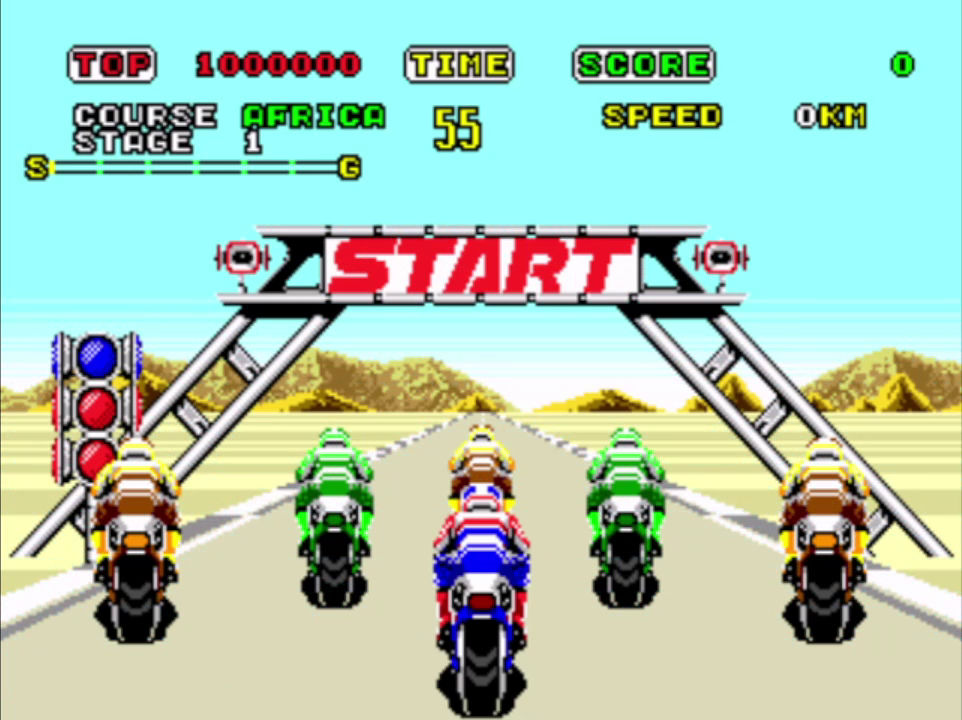
Button A brakes the motorcycle (the red light on the back will illuminate when braking).
Button B accelerates.
Button C activates the motorcycle’s turbocharger (available when reaching the bike’s maximum speed of 280 KM/H, which will be boosted up to 324 with the turbo active - the speedometer will flash red when the turbo can be enabled).
The Start Button pauses and unpauses the game.
From this point, the goal is to make it to the end of the course as seen on the on-screen progress indicator (S for Start and G for Goal). At the end of each stage is a checkpoint, granting the player a reprieve and extending their playtime. The game ends either when the player completes the current course or runs out of time. If their score is high enough, then they can enter their initials on a high score table which keeps track of the top 7 players for that course.
Original Mode
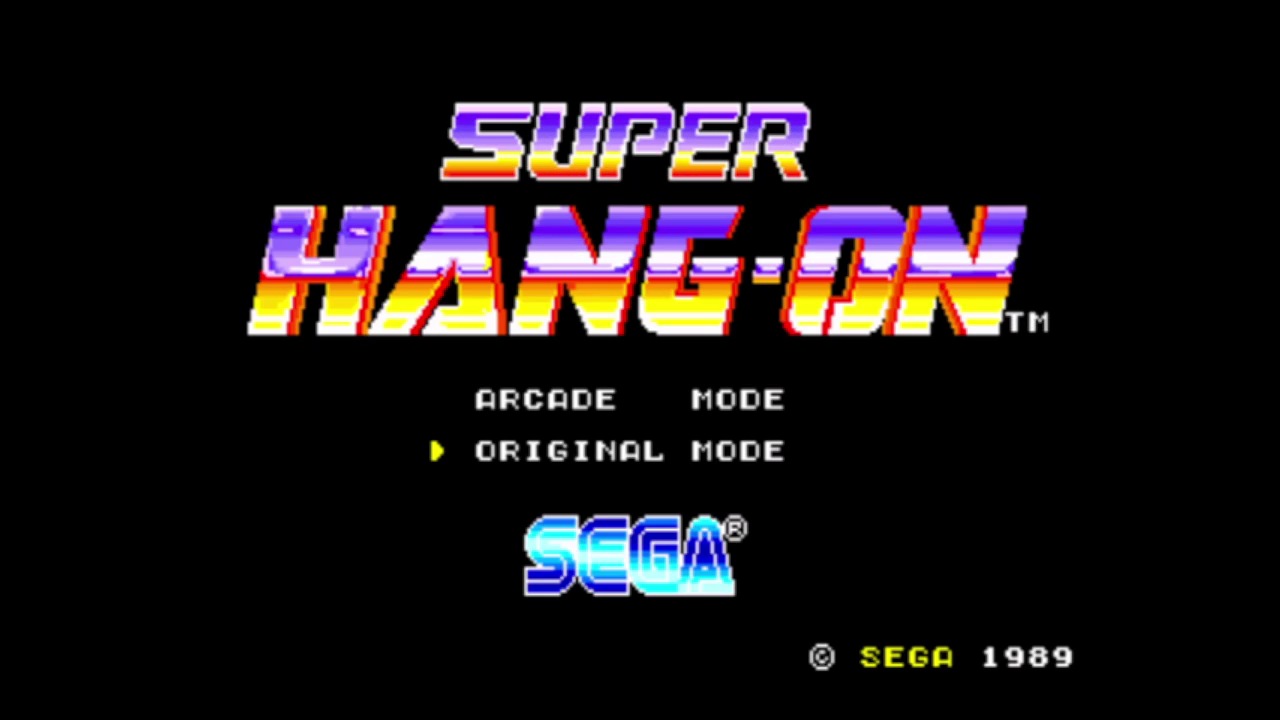
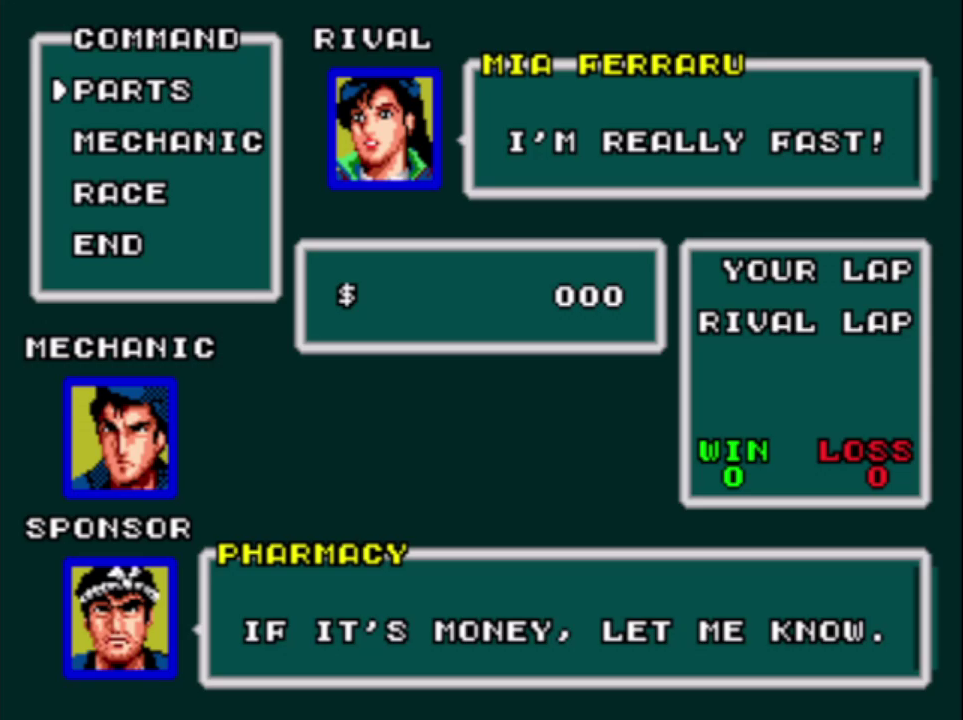
Parts will allow the player to customise their bike with better quality parts once they have earned some money.
Mechanic allows the player to hire a better mechanic depending on their reputation and bank account.
Race begins the race.
End finishes Original Mode, and the player is given a unique-looking and convoluted password (commonplace for games from this era) to note down if they wish to resume their championship in a future playthrough.
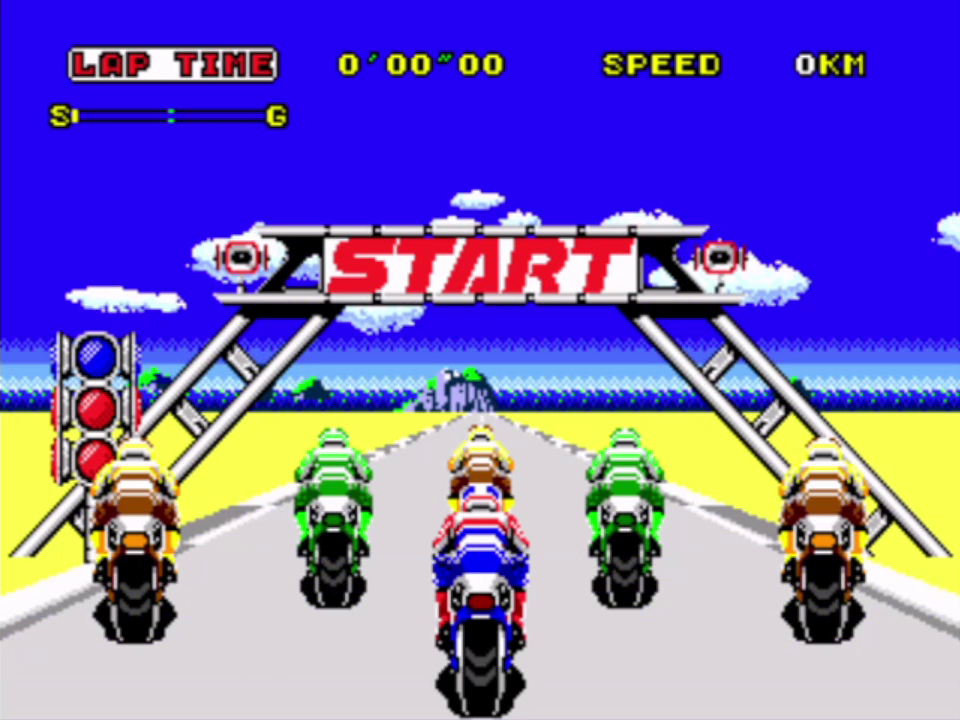
Parts Shop
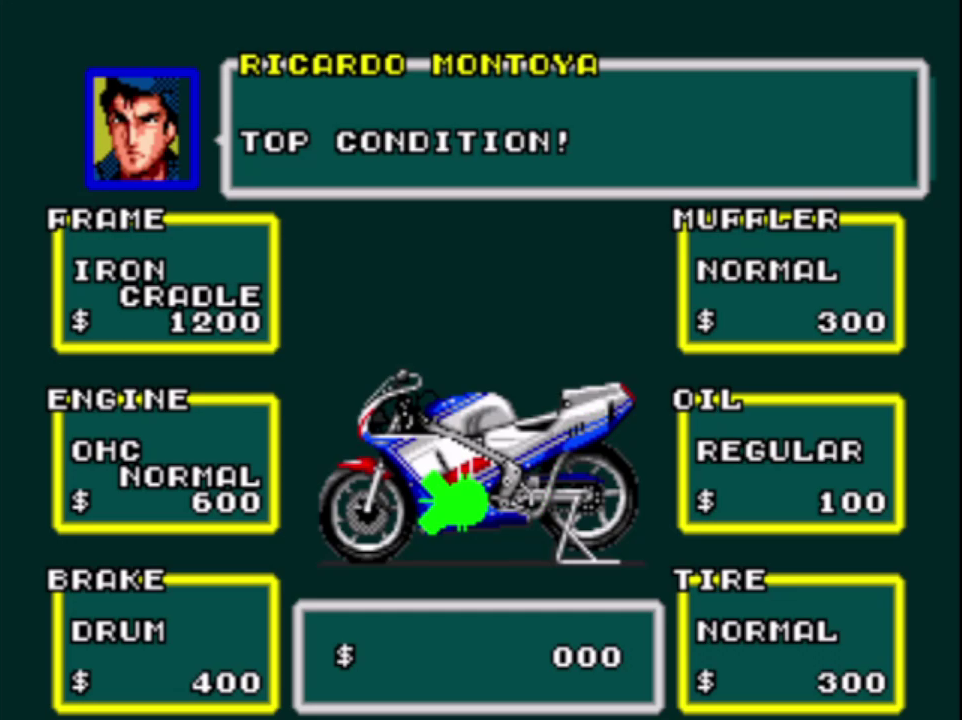
Presentation
Aesthetically, this is the definitive version of the game for its generation - it has all the mechanics of the original arcade version and the addition of the championship-style mode unique to the Sega Genesis/Mega Drive version makes this the port to own. It is nearly arcade-perfect, which, for a game from its era, was nearly unheard of - then again, this is Sega, so it would be a shock if they did not at least attempt to make a playable game on their own console based on one of their biggest arcade successes.
Graphics (Detail, Colour)
The game certainly looks the part thanks to the Sega Genesis/Mega Drive’s colour palette, which seems to be tailor-made for fast-paced action games including this one, and the colours are easy to distinguish, giving each element a unique look and feel. The detail on the motorcycles is impressive considering the technology’s age, and the fact that the player’s motorbike is animated instead of being a static sprite (with the red light on the back illuminating when braking and a jet of fire bursting from the exhaust as the turbocharger is activated) only helps to increase the immersion. The stages’ dynamic background is also a plus (the courses change through various times of day every other stage, depending on the player’s progress, simulating a day-night cycle) and gives the feeling one is in an actual professional race instead of an amateur production.
Sound (SFX, Music)
The sound effects are atmospheric and effective, again using the Sega Genesis/Mega Drive’s hardware to its full potential, while the music is converted directly from the original arcade version with a slight downgrade in quality, but it’s still recognisable and each composition has its own unique melody which will be stuck in players’ minds long after they have finished playing.
Controls
Using a 3-button controller (the 6-button version would hit the scene a few years later with the release of Street Fighter 2: Special Champion Edition), the controls are intuitive and simple to learn, in addition to being fluid and responsive as long as there are not too many sprites on the screen, which is a limitation of these consoles - too many sprites will slow down the game, compromising the fluidity of the controls (particularly so in Original Mode, although that is more likely to do with the condition of the player’s bike, as there are far fewer sprites on the screen in that mode).
Gameplay (Difficulty, Fun-to-Frustration Ratio)
Gameplay-wise, Super Hang-On has just the right balance of fun and frustrating. It’s accessible enough for casual and competitive players, and despite being a single-player game, it encourages people to beat their friends’ scores and times by having them alternate between courses and stages. The one weakness is that in some of the later stages, particularly in the harder courses, can become relentlessly unfair as the AI bikes will attempt to block the player from overtaking or turning around a bend in the road (and will usually gang up on the player).
Hints, Tips & Tricks
When the race starts, hold down the accelerator and don’t let go until it finishes.
Brake (without releasing the accelerator) when turning around bends and corners, particularly tighter ones in the later levels - it is easier and faster to brake than to release the accelerator.
Use your turbocharger when on a straight path - it is risky to use it on turns and bends, as it will increase your chances of crashing. If you crash, then you will lose nearly three (3) seconds of time getting back on the road (this is especially painful in Original Mode, where the condition of your bike as well as your time taken to win the race will affect your prize money, including reparation fees).
NEVER, ever try to overtake your opponents on a bend if they’re blocking the way ahead - let them pass and then try to catch up with them on a straight path.
Overall
Super Hang-On is an arcade classic and a must-own for both Sega fans and lovers of motorcycle-themed racers. This version blows every other release out of the water except for the arcade version, which was released as a downloadable title on the PlayStation Store in 2012. If you have a Sega Genesis/Mega Drive, then this is one of my personal recommendations to purchase, as renting would not justify its full content and value for money. Thankfully, this game was released as part of several “Mega Game” collections for the console, which included multiple hit games (usually by Sega themselves) on a single cartridge, so it’s not hard to find.
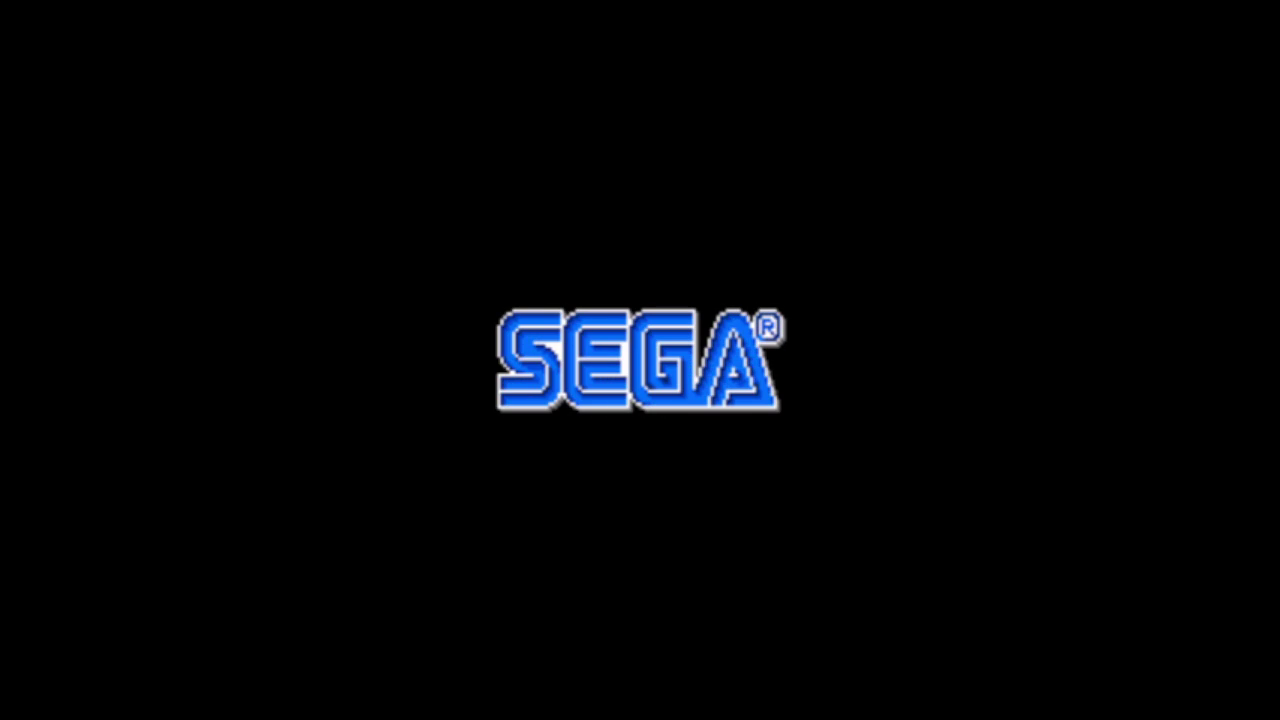
Final Score: 5 out of 5.
Recommend
About Joyk
Aggregate valuable and interesting links.
Joyk means Joy of geeK